In the last decade, we’ve taken photos of a black holes, peered into the heart of atoms and looked back at the birth of the Universe. And yet, there are yawning gaps in our understanding of the Universe and the laws that govern it. These are the mysteries that will be troubling physicists and astronomers over the next decade and beyond.
Why is there something rather than nothing?
In the beginning, according to the standard picture of cosmology, was the ‘inflationary vacuum’. It had a super-high energy density and repulsive gravity, causing it to expand. The more of it there was, the greater the repulsion and the faster it expanded.
In common with all things ‘quantum’, this vacuum was unpredictable. At random locations, it decayed into ordinary, everyday vacuum. The tremendous energy of the inflationary vacuum had to go somewhere.
And it went into creating matter and heating it to a blisteringly high-temperature – into creating big bangs. Our Universe is merely one such Big Bang bubble in the ever-expanding inflationary vacuum.
Remarkably, this whole process could have started with a piece of inflationary vacuum with a mass equivalent to a bag of sugar. And, conveniently, the laws of physics – specifically, quantum physics – permit such matter to pop into existence from nothing. Of course, the next obvious question now is: where did the laws of physics come from?

In 1918, German mathematician Emmy Noether shed light on this. She found that the great conservation laws are mere consequences of deep symmetries of space and time – things that stay the same if our viewpoint changes.
A striking property of such symmetries is that they are also symmetries of the void – of an entirely empty Universe. So maybe the transition from nothing to something was not such a big deal. Maybe it was simply a change from nothing to the ‘structured’ nothing of our galaxy-filled Universe.
But why did the change happen? The American physicist Victor Stenger pointed to the fact that, as the temperature drops, water turns into structured water, or ice, because ice is more stable. Could it be, he speculated, that the Universe went from nothing to ‘structured nothing’ because structured nothing is more stable?
Why is there a monster black hole in the heart of every galaxy?
There are about two trillion galaxies in our Universe and, as far as we know, almost every one contains a central supermassive black hole. They range in size from monsters, weighing almost 50 billion times the mass of the Sun, to the 4.3-million-solar-mass tiddler known as Sagittarius A* in the core of our Milky Way (one solar mass = mass of our Sun). But how they got there is one of the great unsolved mysteries of cosmology.
We know that a stellar black hole forms in a supernova explosion in which the core of a star implodes. But nobody knows how a supermassive black hole forms.
For most of cosmic history, the centres of galaxies have been where a lot of matter is confined in a small volume. It could be the case that supermassive black holes form in a dense star cluster out of stellar black holes which repeatedly merge with each other.
Tentative evidence for this comes from a merger between two black holes revealed by a detection of gravitational waves. One hole was too big to be a supernova relic and so may have originated in an earlier merger.
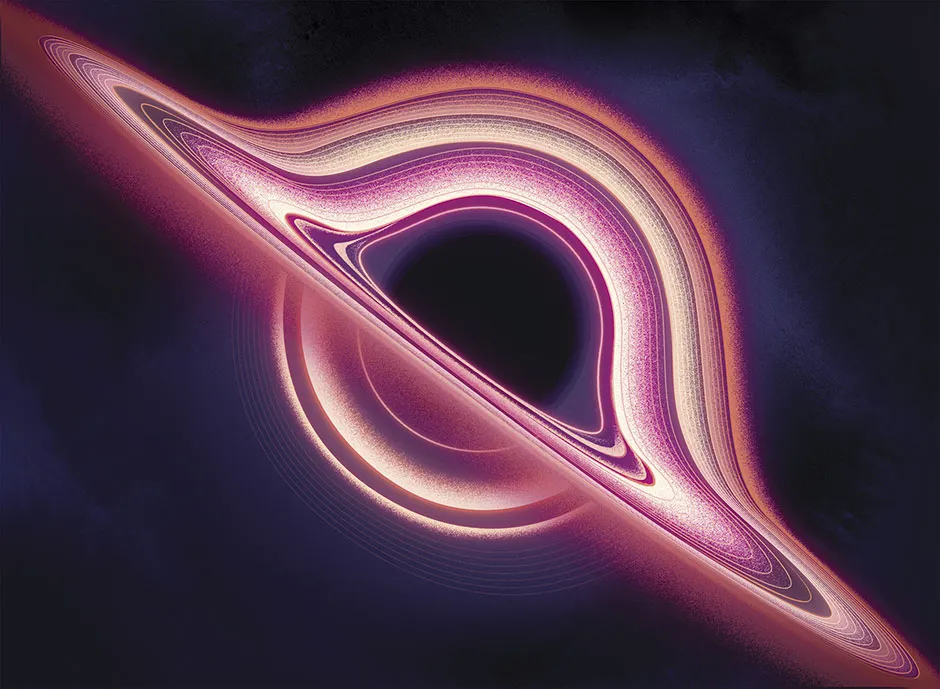
An alternative way to form a supermassive black hole is from the direct shrinkage of a dense cloud of gas. It could be that they form from a combination of cloud collapse and black hole mergers.
It is also possible that supermassive black holes formed in the Big Bang. This would provide a novel answer to the cosmic chicken-and-egg question: which came first – galaxies or supermassive black holes? Rather than galaxies forming first and then spawning such monsters, supermassive black holes would form first and provide the seeds about which galaxies of stars formed.
Despite their masses, even the biggest supermassive black holes are hardly bigger than the Solar System. Yet they project their power across millions of light-years by means of oppositely directed super-fast jets of matter. Where such jets are fast – in the inner regions of a galaxy – they drive away gas and snuff out star formation; where they have slowed – in the outer regions – they compress gas and trigger star formation.
In fact, powerful jets from the biggest holes seem to control the masses of stars that form, with a tendency towards smaller, cooler stars like our Sun. So, who knows, it might be the case that we can thank Sagittarius A* for our Sun, without which you probably wouldn’t be reading this page.
Read more about supermassive black holes:
- Hubble's greatest discoveries: Supermassive black holes
- Can life exist around a black hole?
- The M87 image will change our understanding of black holes, but why was the photo so hard to capture?
What is dark matter?

Dark matter gives out no light or too little light for us to detect. We know it exists because we see the effect of its gravity on the visible stars and galaxies. For instance, the Milky Way could not have dragged in enough matter to make its stars in the 13.82 billion years since the Big Bang without there being a lot of invisible matter whose extra gravity speeded things up.
The European Space Agency’s Planck satellite found that dark matter accounts for 26.8 per cent of the mass-energy of the Universe compared with the 4.5 per cent of normal ‘atomic’ matter. It therefore outweighs the visible stars and galaxies by a factor of about six.
For a long time, the favoured candidates for dark matter particles have been Weakly Interacting Massive Particles, or WIMPs. But although these particles fit the bill, they have failed to appear at the Large Hadron Collider near Geneva in Switzerland. A candidate gaining favour is the super-light ‘axion’, a hypothetical subatomic particle. A rank outsider remains primordial black holes, left over from the Big Bang.
Puzzlingly, no Earth-based experiment has found any evidence of dark matter, despite decades of searching. It is conceivable that it is not our theory of matter that needs modification but our theory of gravity. Or that dark matter is not a fluid made of a single particle but is complex like the atomic matter we see around us. Maybe the Universe is filled with dark stars and dark planets and dark life!
Read more about dark matter:
- Desperately seeking dark matter: the search for 95 per cent of the Universe
- Hubble's greatest discoveries: Dark matter
Does time exist?
Time is what stops everything happening at once,” said American physicist John Wheeler. But time is a slippery concept. Most of what we think we know is false.
For instance, we imagine time flowing. However, for something to flow, it must flow with respect to something else, just as a river flows with respect to a river bank. Does time flow with respect to something else – a second type of time? The idea seems nonsensical. Most likely, the flow of time is an illusion created by our brains to organise the information constantly flooding in through our senses.
We also have a strong sense of a shared past, present and future. However, the idea of a common present appears nowhere in our fundamental description of reality: relativity. Precisely how someone else’s time is sliced up depends on how fast they are moving relative to you or the strength of the gravity they are experiencing.
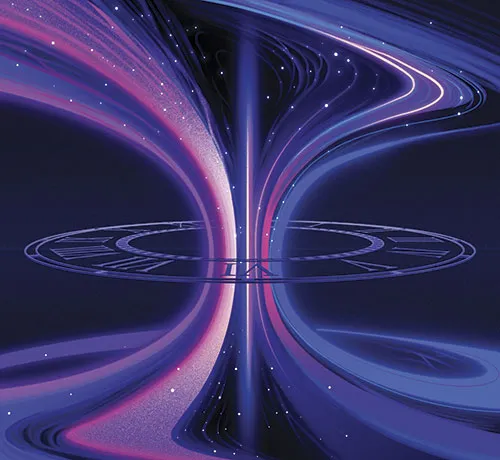
These effects are noticeable only at relative speeds close to that of light or in ultra-strong gravity, which is why they are not obvious in the everyday world. Nevertheless, they lead to the idea that one person’s interval of time is not the same as another person’s, and that one person’s interval of space is not the same as another’s.
Actually, it is worse. Space and time are inextricably intertwined. In our Universe, all events – from the Big Bang to the death of the Universe – are laid out in a pre-existing four-dimensional space-time map. Nothing actually ‘moves’ through time.
As Einstein wrote after the death of his friend Michele Besso: “Now he has departed from this strange world a little ahead of me. That means nothing. People like us, who believe in physics, know that the distinction between past, present and future is only a stubbornly persistent illusion.”
If the expansion of the Universe is imagined running backwards like a movie in reverse, in its earliest moments space and time are both ripped apart. Physicists therefore suspect that in the Big Bang time emerged from something more fundamental. As yet, no one knows what that might be.
Read more about time:
- Does anybody actually know what time it is?
- Why does time speed up when you get older?
- Will time ever end?
What is dark energy?
It’s invisible, fills all of space and its repulsive gravity is speeding up the expansion of the Universe. ‘Dark energy’ was discovered by astrophysicists in 1998. They were studying type 1A supernovae – stellar explosions believed to unleash a fixed amount of energy and burn with a standard luminosity like a cosmic 100W lightbulb.
The problem was that the most distant supernovae were fainter than expected. Cosmic expansion had speeded up, pushing them further away.
At the time, the only force thought to be operating in the large-scale Universe was gravity, which acts like an invisible web between the galaxies, braking cosmic expansion.
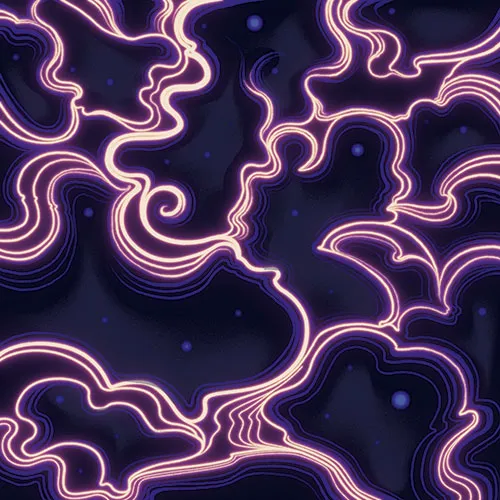
The discovery that the expansion of space was speeding up gobsmacked cosmologists who were forced to postulate the existence of a substance that accounts for an astonishing two-thirds of the mass-energy of the Universe. This ‘dark energy’ overwhelmed gravity and gained control of the Universe about five billion years ago.
One possibility is that dark energy is a cosmological constant, an intrinsic repulsion of space. Such repulsion might arise from quantum energy fluctuations in the vacuum.
However, when quantum theory, our best theory of the submicroscopic world, is applied to the vacuum, theorists predict an energy density that is 10 followed by 120 zeros bigger than that of the dark energy: the biggest discrepancy between a prediction and an observation in the history of science.
Conceivably, the discrepancy will disappear when we finally manage to combine quantum theory with Einstein’s theory of gravity. Meanwhile, space experiments may help. In 2022, the European Space Agency will launch Euclid, which will measure how dark energy varies with cosmic time, hopefully providing a vital clue to solving what is the biggest puzzle in science.
Read more about dark energy:
- Dark energy is hiding in our Universe – here's how we'll find it
- Black holes and dark energy: how Hubble discovered the Universe's darkest secrets
Why have we seen no sign of aliens?
In 1950, Enrico Fermi, the man who built the first nuclear reactor, was having lunch in the canteen of the Los Alamos bomb lab in New Mexico when he suddenly said: “Where is everybody?” Everyone around the table knew exactly what he meant.
Decades later, Fermi’s question was examined independently by the American physicists Michael Hart and Frank Tipler. Hart considered aliens spreading throughout our Milky Way and Tipler considered self-replicating machines that, on arrival at a planetary system, exploit the resources to build two copies of themselves that continue voyaging.
Both concluded that, even at modest speeds of travel, every star in the Galaxy would be visited in a fraction of the age of the Milky Way. As Fermi realised, the aliens should be here on Earth. They do not appear to be. This became the ‘Fermi paradox’.
Hundreds of explanations have been proposed. They include the ideas that we are the first intelligence to arise in the Galaxy and so are totally alone, and that we are a nursery world, off-limits to advanced civilisations that might adversely affect our development.
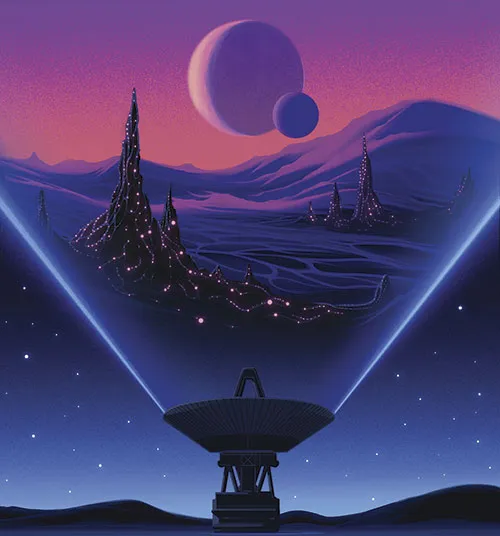
A more mundane possibility is that there is no paradox, because any signs of visitation in the distant past would be erased by wind, rain and geological processes. Recently, however, a team led by Dr Jonathan Carroll-Nellenback of the University of Rochester, New York, has proposed that our Sun may simply have been bypassed by a wave of extraterrestrial expansion.
There remains the question of why we have seen no sign of extraterrestrials in our Galaxy, despite searching with telescopes for more than half a century. However, a Pennsylvania State University team led by Dr Jason Wright says there is no mystery: we have searched a mere fraction of the Galaxy, equivalent to the water in a
hot tub compared to that in Earth’s oceans.
As Douglas Adams observed so perceptively in The Hitchhiker's Guide To The Galaxy: “Space is big. You just won't believe how vastly, hugely, mind-bogglingly big it is.”
Read more about the search for alien life:
- Should we be signalling our existence to alien life?
- Why we want to believe in aliens
- Alien life in our Solar System: 5 best places to look
Why has nature triplicated its basic building blocks?
Say Lego launched a version of its bricks in which each brick was hundreds of times bigger than a standard brick. And say it then launched another version in which the bricks were thousands of times bigger. You would be forgiven for thinking the company had gone bonkers. But this is exactly what nature has done with its fundamental building blocks – the quarks and leptons.
Normal matter is made of just two kinds of quark and two kinds of lepton. But there also exists a second ‘generation’ of quarks and leptons in which all the particles are identical to the first apart from being hundreds of times heavier, and a third generation in which they are identical but thousands of times heavier.
The heavier generations take a lot of energy to create so are rarely seen today. However, it is likely they played some critical role in the Big Bang. But why the wildly different masses of the particles in each generation? Dr Steven Weinberg, an American physicist and Nobel laureate, has made an interesting speculation.
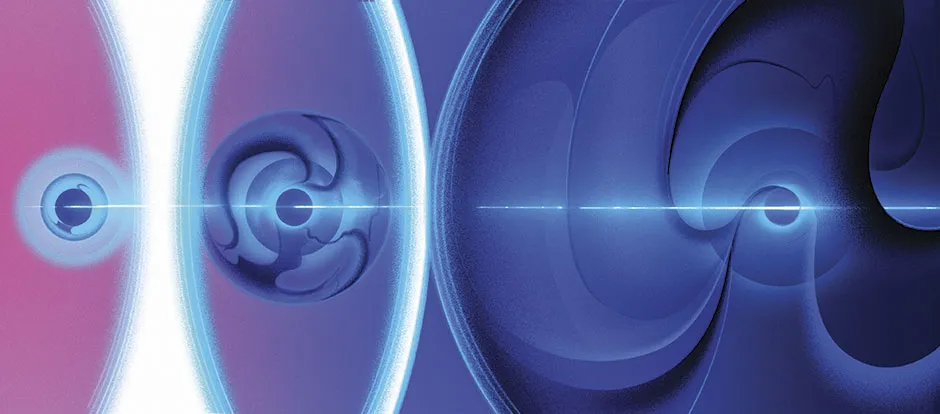
The basic building blocks of matter gain their masses by interacting with the Higgs field, an invisible fluid that fills all of space. You can think of them interacting with the Higgs particle, a localised hummock in this energy field.
Weinberg points out that particles which interact most strongly with the Higgs field end up with masses close to that of the Higgs particle, and these are the particles of not of the first but the third generation.
Maybe, speculates Weinberg, they are the only particles that interact directly with the Higgs. Maybe the second generation get their masses by interacting with an undiscovered particle that interacts directly with the Higgs. And maybe the first generation get theirs by interacting with a second undiscovered particle that interacts with the first.
It is like that playground game in which a message is passed down a line of children and what is relayed gets ever further removed from what was originally said. Perhaps with each lower generation, the particles become further removed from ‘feeling’ the Higgs field, so its mass-generating effect is ever diluted.
Weinberg does not know how such a mechanism could work in detail. But other physicists feel he may have provided a hint of how to solve the puzzle of nature’s triplicated building blocks.
- This article first appeared inissue 359ofBBC Science Focus Magazine–find out how to subscribe here
